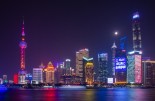BLI: TSMC at the epicenter of the technology war
BLI: TSMC at the epicenter of the technology war

Against a backdrop of technological rivalry between China and the US, the Trump administration's strategy is one of controlled dependence rather than total embargo, allowing certain semiconductor exports to China. At the center of these geopolitical tensions, TSMC is leveraging its dominant position to turn trade restrictions into growth opportunities, while navigating an increasingly risky environment.
In October 2022, the Biden administration introduced export controls to limit China's access to the most advanced semiconductors and manufacturing equipment, with further tightening in October 2023, December 2024 and more recently in April 2025. These measures were aimed at curbing China's military modernisation and its development capabilities in artificial intelligence.
Today, after three years of increasing restrictions, the Trump administration is changing course. Rather than maintaining this logic of total containment, Washington is adopting a less strict approach by reauthorizing the export to China of certain chips (such as NVIDIA H20 GPUs), whose production is outsourced to Taiwan Semiconductor Manufacturing Company (TSMC), while preserving exclusive access to cutting-edge technologies. This shift marks a move from pure restriction to dependency management. It was with these objectives in mind that, in July 2025, US Secretary of Commerce Howard Lutnick declared his intention to make Chinese developers ‘addicted to American technology while denying them access to the most advanced chips.
This strategy would allow the United States to keep China one step behind, in a carefully calibrated state of dependence. Offer enough to maintain Chinese engagement in the American technology ecosystem, but not so much as to allow technological emancipation. This measured dependence transforms each exported chip into an invisible but structural link of subordination. Semiconductors are now entering a logic reminiscent of a certain 19th-century British strategy: imposing dependence in order to correct a trade imbalance on the one hand and limit industrial growth and thus strategic autonomy on the other. Except that today, this strategy is being pursued not with cannons but by imposing restrictions on US and European technology exports.
The lifting of export restrictions on these chips to China is a direct boost for TSMC. As the manufacturer of these H20 GPUs for NVIDIA, the Taiwanese giant can thus maintain a stream of orders to China while complying with the new US rules, skillfully navigating between commercial opportunities and geopolitical constraints.
As a reminder, to better illustrate the role of companies such as NVIDIA and TSMC in the semiconductor value chain, we could compare them to an architectural firm and a construction company. On the one hand, companies specialising in chip ‘design’ (e.g. NVIDIA) design and model the architecture of integrated circuits. On the other hand, foundries (e.g. TSMC) use these plans to manufacture the chips, much like a builder constructs a building based on an architect's plans.
How does TSMC leverage its dominant position?
At the heart of this geopolitical shift is TSMC, which, on the one hand, can take advantage of certain opportunities, but on the other, operates in an increasingly risky environment. Today, TSMC produces more than 90% of the world's most advanced chips (3nm and below), which are highly sought after by both tech giants and governments themselves. The Taiwanese company is seeing doors open wide in the United States, Japan and Germany to establish production sites (foundries). Huge loans, subsidies and tax incentives are among the packages offered to TSMC.
These relocations will enable the host countries to reduce their dependence on Taiwan, guarantee direct and priority access to the most advanced chips, create jobs, revitalise high-tech ecosystems and, above all, capture a larger share of the value chain (design + production + assembly), thereby reducing imports and, to a lesser extent, creating exportable capacity. The United States dominate the upstream value chain through companies such as NVIDIA, Alphabet, Microsoft, Broadcom, etc., which are leaders in chip design, while production is largely outsourced to TSMC.
With massive subsidies and tax incentives on the one hand, and geopolitical risks on the other, TSMC can in some ways take advantage of this situation. The company benefits from fundamentals that are difficult to challenge, including:
- A technological lead of several years thanks to unique industrial expertise and massive spending in research and development (≈$6 billion in 2024);
- Economies of scale that are difficult to replicate based on fixed asset expenditure of more than $30 billion per year; and
- Customers who are captive due to very high supplier transfer costs (if any).
These structural advantages allow the company to navigate geopolitical uncertainties with a certain degree of confidence.
Relocations thus provide the Taiwanese giant with an opportunity to reduce geopolitical risk by diversifying geographically and thereby protecting itself against the ‘Taiwan risk’, which includes the risk of invasion and, more recently, tariff threats. Furthermore, with restrictions on exports to China of American (e.g. Applied Materials), Dutch (e.g. ASML) and Japanese (e.g. Tokyo Electron) equipment used to manufacture the most technologically advanced chips, TSMC benefits from its virtual monopoly by having privileged access to this critical equipment. Its Chinese competitors are forced to find alternatives that are often more expensive and far less efficient.
Another opportunity for TSMC in this context of geographical diversification, particularly through the establishment of factories in the United States, lies in reducing currency risk. With more than 65% of its revenue generated in the United States but 75% of its costs invoiced in Taiwan in local currency, TSMC has recently suffered from the depreciation of the US dollar against the Taiwanese dollar. Locating part of its production in the United States would enable TSMC to better align its revenues and expenses in the same currency and thus reduce the sensitivity of its margins to fluctuations in the USD/TWD exchange rate. However, this opportunity remains relative and conditional, as production costs in the United States are higher than in Taiwan (wages, services, maintenance, level of fixed asset utilisation).
It is therefore essential for TSMC to leverage its unique positioning to exploit its pricing power and secure sufficient subsidies to mitigate these new economic and operational challenges. As TSMC CFO Wendell Huang mentioned during the second quarter results’ announcement, six factors determine the company's profitability: the development and rollout of cutting-edge technologies, pricing, capacity utilisation, cost reduction, technology mix and exchange rates.
Does the future still belong to the Taiwanese giant?
This technological conflict reveals a strategic approach where the objective is not to punish China, but to maintain its structural dependence. This geopolitical balance of power revolves around control of technological access and the goal of shaping the opposing economy through subtle economic levers.
Paradoxically, both superpowers remain dependent on an ‘external’ player, TSMC. The Taiwanese company is taking advantage of this cross-dependence, benefiting from tax incentives and subsidies that allow it to geographically diversify its production chain outside Taiwan. The company is thus transforming the Sino-American rivalry into a lever for growth, skillfully exploiting its quasi-monopolistic position in the semiconductor market.
However, despite its unique market position, TSMC remains exposed to the rise of Chinese players, which are making progress in the manufacture of equipment sold to local foundries (mainly to the Chinese company SMIC) enabling the development of relatively advanced chips and, ultimately, competition for the Taiwanese company.
As Chris Miller says in his book Chip War (2022) : "Whoever controls the chips controls the future. (...) And no country wants to depend on its rival for critical 21st-century technologies.” That said, according to estimates, SMIC is estimated to be about five years behind its Taiwanese counterpart in terms of the most advanced chips (3/2nm), due in part to the fact that it does not have access to the ’Extreme Ultraviolet" lithography machines sold by ASML and the etching and deposition machines of Applied Materials and Tokyo Electron.
Finally, Washington's threat of possible import tariffs on semiconductors brings with it the risk of directly affecting TSMC's exports to the United States, but also indirectly by dampening global demand for chips due to increased uncertainty.
In conclusion, TSMC remains a key player in our Asia ex-Japan allocation and is a strong long-term conviction. The Taiwanese giant enjoys undeniable structural competitive advantages and long-term growth drivers, including the rise of artificial intelligence. However, we will closely monitor developments in trade restrictions, tariff threats and the impact of higher production costs in new Western factories on the company's margins.








